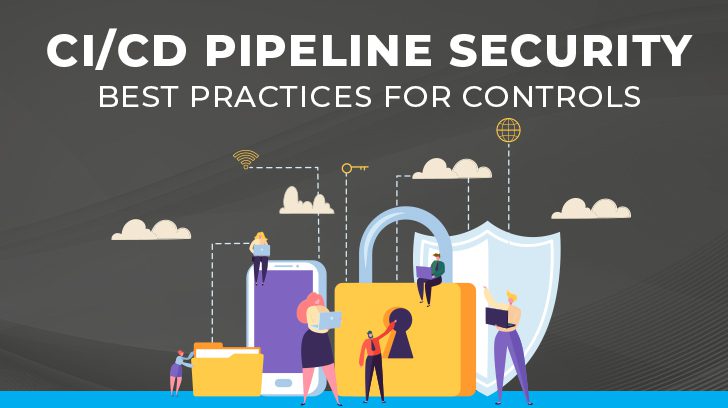In modern software development, Continuous Integration and Continuous Deployment (CI/CD) pipelines are crucial for delivering high-quality software quickly and efficiently. However, these pipelines can become vulnerable points in the development lifecycle if not properly secured. Implementing robust security controls within the CI/CD pipeline is essential to managing the change process securely. Let’s explore the key controls that should be integrated into a typical CI/CD pipeline, including the importance of branch protection rules.
Fortifying Access Control
Access control is fundamental to securing the CI/CD pipeline. Implementing strict access controls ensures that only authorized personnel can make changes to the pipeline, access sensitive data, and deploy applications. Role-Based Access Control (RBAC) assigns roles based on the principle of least privilege, ensuring developers only have access to the components necessary for their work. Multi-factor authentication (MFA) adds an extra layer of security for accessing the CI/CD tools and infrastructure. Comprehensive audit logs track who accessed the system, what changes were made, and when, helping to identify unauthorized access or changes.
Enforcing Branch Protection Rules
Branch protection rules are a critical aspect of maintaining the integrity and security of the codebase. These rules enforce policies that prevent direct commits (i.e., code updates) to critical branches, such as the main or master branch. Instead, changes must be made through pull requests (i.e., request to update a codebase), which undergo thorough review and testing before merging (i.e., once approved, changes are promoted to the target branch). This ensures all modifications are scrutinized and meet the required standards before becoming part of the main codebase. Requiring pull requests for all changes facilitates peer review, allowing team members to discuss and review code changes before they are merged. Additionally, branch protection rules can enforce status checks, ensuring all required tests pass before a pull request can be merged.

Enhancing Code Review Processes
Code reviews are another critical checkpoint in ensuring the quality and security of the code before it progresses through the pipeline. Automated code review tools can scan for common vulnerabilities, code smells, and non-compliance with coding standards. Implementing workflows that require approval from multiple team members, including at least one senior developer or a security expert, ensures that changes are thoroughly reviewed before being merged into the main branch. These workflows often integrate with branch protection rules, preventing unauthorized changes from bypassing the review process.
Implementing Automated Testing
Automated testing is essential to identify issues early in the development process and to ensure that new changes do not introduce new vulnerabilities. Unit tests should cover a significant portion of the codebase to catch bugs at the earliest stage. Integration tests verify that different parts of the application work together as expected. Integrating security testing tools like static application security testing (SAST) and dynamic application security testing (DAST) into the pipeline helps detect security vulnerabilities. Regularly scanning for vulnerabilities in third-party libraries and dependencies used in the project is also crucial.
Securing & Segmenting Environments
Securing the environments where your CI/CD pipeline runs is crucial to maintaining the integrity and confidentiality of your software and data. Using isolated environments for different stages of the pipeline—development, testing, QA, staging, and production—prevents unauthorized access and reduces the risk of cross-environment contamination. Managing and provisioning infrastructure using Infrastructure as Code (IaC) tools ensures that environments are consistent, reproducible, and can be version-controlled. Secrets management tools securely store and manage credentials, API keys, and other sensitive information required by the pipeline.

Continuous Monitoring and Logging
Continuous monitoring and logging are vital for detecting and responding to security incidents in real time. Implementing real-time monitoring of the CI/CD pipeline helps detect anomalies, such as unexpected changes or access patterns, that could indicate a security breach. Centralized logging collects and analyzes logs from various stages of the pipeline, helping to correlate events and identify suspicious activities. Setting up alerting mechanisms to notify the appropriate personnel when potential security issues are detected is essential for prompt response.
Ensuring Compliance
Ensuring compliance with industry standards and regulations is essential for maintaining the security and trustworthiness of your CI/CD pipeline. Regularly performing compliance scans ensures your pipeline adheres to relevant standards such as GDPR, HIPAA, or PCI-DSS. Implementing policies that enforce compliance requirements at every stage of the pipeline ensures that all code changes are reviewed and approved before deployment. Does the phrase ‘shift left’ ring a bell? This is the idea of incorporating security and compliance as early in the development cycle as possible, not after it has already been released.
Preparing for Incident Response
Having a well-defined incident response plan ensures your team can quickly and effectively respond to security incidents. Developing and maintaining an incident response plan outlines the steps to be taken in the event of a security breach. Conducting regular drills and simulations ensures that all team members are familiar with the incident response procedures. After an incident, conducting a thorough review identifies what went wrong, what was done well, and how processes can be improved to prevent future incidents.
Conclusion: Prioritizing Security in the CI/CD Pipeline
Securing the CI/CD pipeline is a critical aspect of modern software development. By implementing the following essential controls, you can ensure your pipeline is resilient against security threats and your change management process is both efficient and secure.
- Access Controls
- Code Review Processes
- Branch Protection Rules
- Automated Testing
- Environment Security
- Monitoring and Logging
- Continuous Compliance
- Incident Response Planning
By prioritizing security at every stage of the pipeline, organizations can deliver high-quality software faster, with greater confidence in its safety and reliability.
Check out this helpful resource from OWASP and deep dive into their recommended security best practices: OWASP CI/CD Security Cheat Sheet
Please reach out to Linford & Company if you are looking for additional guidance on securing your CI/CD pipeline. Our team is also highly specialized in a variety of audit services, including SOC 1, SOC 2, HITRUST certification, and more. We would be happy to assist your organization through its upcoming audit process.

John has over 15 years of experience focused on IT security, governance, risk, compliance, and privacy. He started his career in 2006 with Protiviti and later went on to run IT audit and GRC functions for several Fortune 500 companies within the financial services, energy, hospitality, and software industries. John is also a certified information systems auditor (CISA) and holds a Bachelor of Science degree in Management from Colorado State University.




